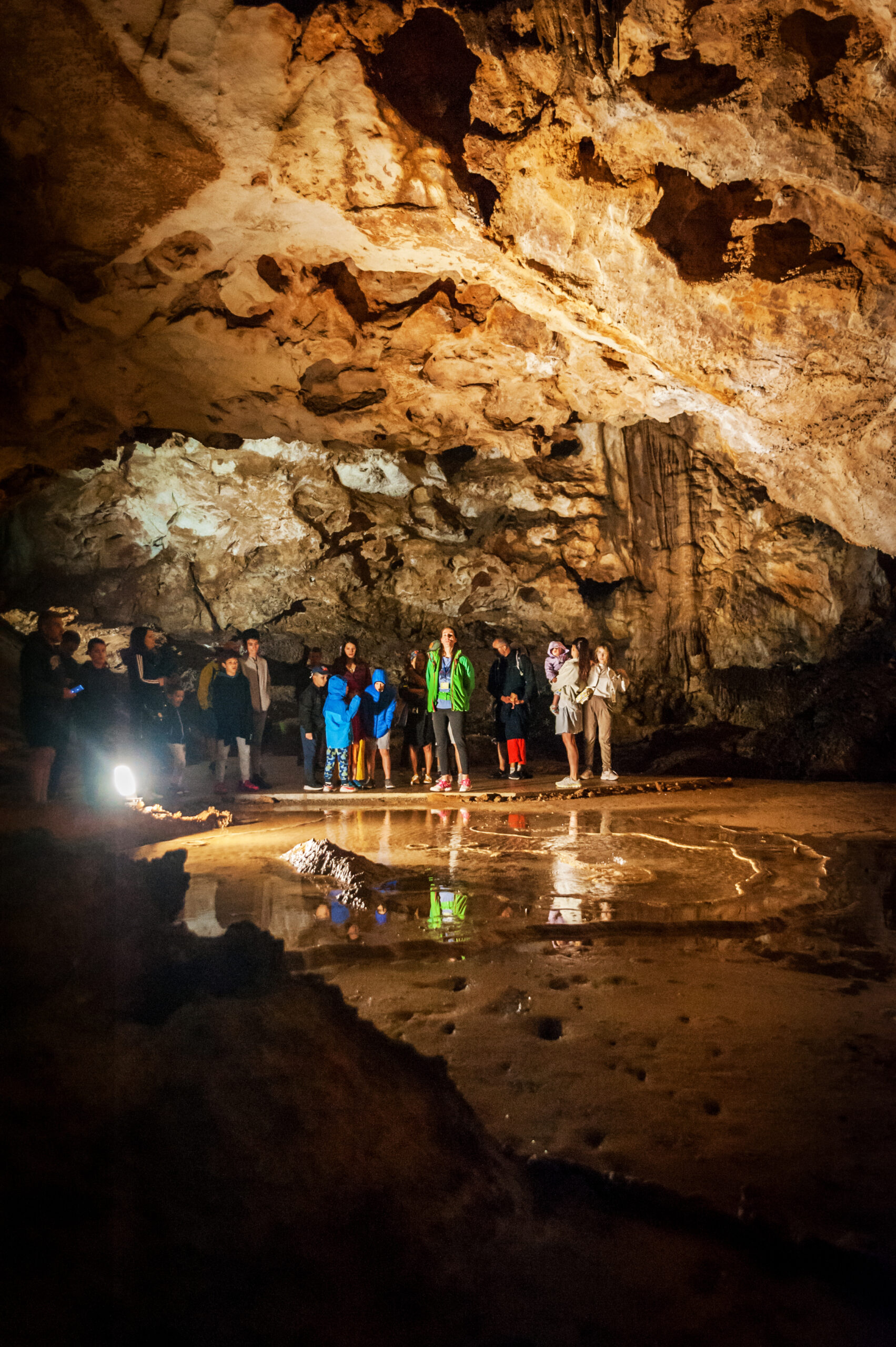Water has determined and shaped the existence of life and nature around us. Because of its properties, it is also called the solvent of life. Namely, water is a universal solvent due to its ability to dissolve many substances. Precisely because of this ability, the underground world of karst areas is characterized by ornaments of unique shapes, textures, names, and colors.
Speleological object Lipa cave has long been known for its wealth of various cave ornaments and formations. It’s even known that back in the 19th-century, locals named some cave ornaments for easier orientation in the dark depths of the underground world. Namely, locals used Lipa cave as a source of water. They entered Lipa cave through the Pit entrance by using ropes and torches.
Under the light of torches and in shadow play, the locals saw a crocodile, gusle, intestines, and twins. During summer months, the locals would go all the way up to gusle, a point with a constant source of water within Lipa cave. Their curiosity took them deeper into the darkness until they found a stalagmite within the belly of Cetinje’s karst which they aptly named the intestines.
Cave ornaments have their speleological names, besides the ones given to them by the locals. The initial part of the cave walls is brimming with corals. The angle at which they form makes them seemingly defy gravity. Namely, strong airflow has determined their somewhat slanted growth. Aside from the well-known stalactites and stalagmites, there are stalagnites, i.e., columns, formed when stalactites and stalagmites connect. At the very turning point to the Lake gallery, visitors can see two columns named the twins.
In the centuries to come, great-grandchildren of our great-grandchildren will get the chance to witness the creation of another cave column. The so-called totem, the central ornament in Njegos’s gallery, will connect with the stalactites above it, thus forming another cave column.
An ornament that attracts visitors the most is a flowstone. The locals, however, named it tongue. The sheer size, different colors, texture, and the threshing floor built around the flowstone, are what draws visitors to gather around it, much as it did centuries ago.
An ornament specific in shape and manner of creation is called a curtain. This ornament is formed while drops of water glide down a sloped part of the cave ceiling. A trace of minerals is left behind and new drops of water glide over the previous trace of minerals, thus cave curtains are formed. The so-called curtains resemble thin draperies with a few pleats and several colors.
Seeing as Lipa cave is relatively young, most rimstone dams our visitors can see are still in their early stages of forming. One of the largest rimstone dams is called gusle due to its specific shape. Unlike stalactites and stalagmites, rimstone dams are formed by flowing instead of dripping water.
Come and visit Lipa cave so you can hear all details about these and other ornaments and enjoy the charm of the underground world.
For more info on our most popular Cave experience tour visit: Cave experience – Lipa cave (lipa-cave.me)


